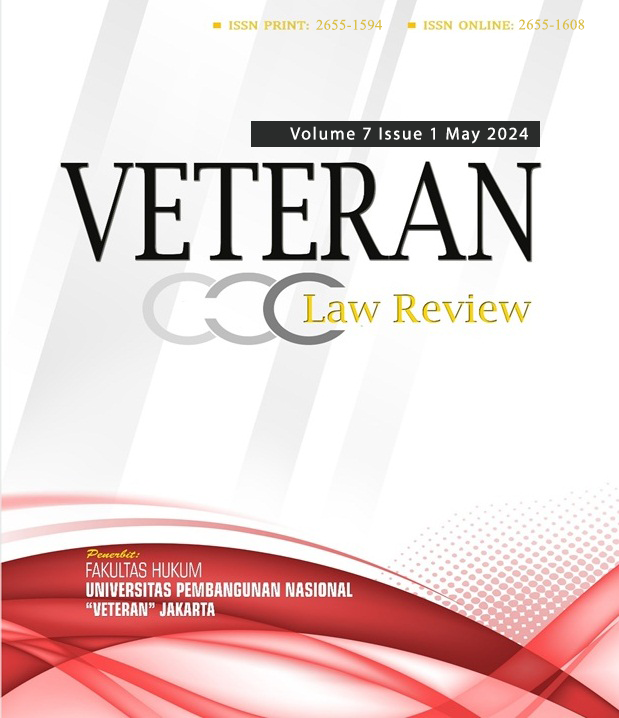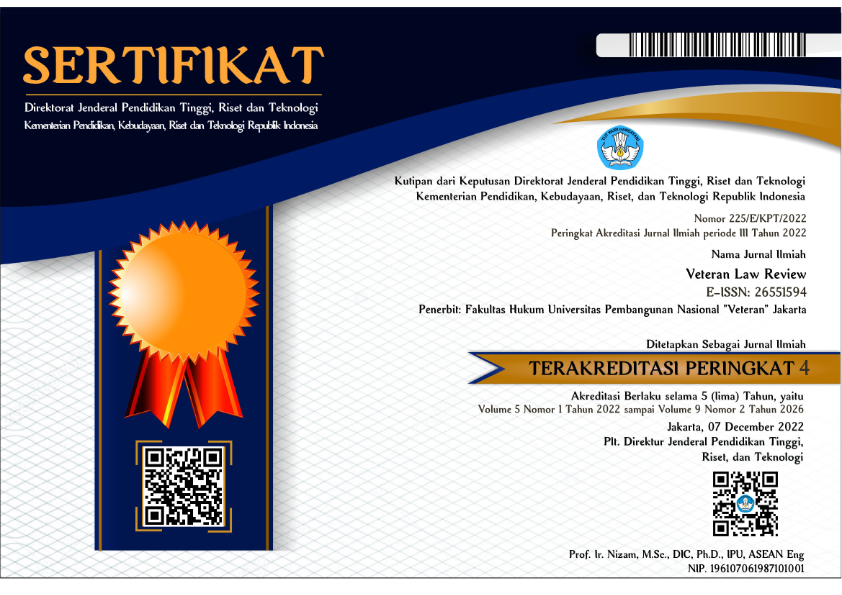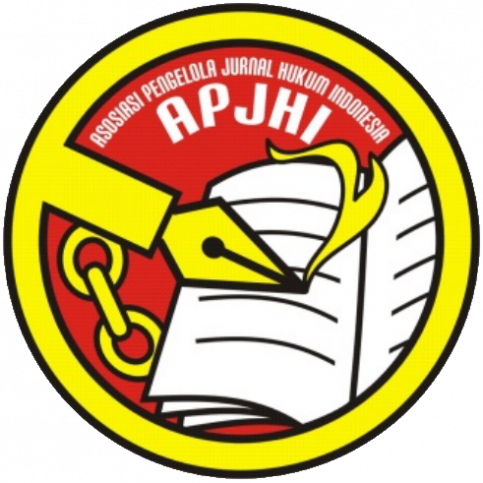Legal Protection for Women Victims of Verbal Sexual Harassment in Public Environments (Catcalling)
DOI:
https://doi.org/10.35586/velrev.v7i1.6519Keywords:
Legal Protection, Catcalling, WomanAbstract
Verbal sexual harassment or commonly called catcalling is verbal sexual harassment behavior that occurs in public by uttering indecent, sensitive remarks or words at the victim, causing feelings of fear, discomfort and threat. Usually the form of catcalling is in the form of whistling, harsh words containing pornographic elements, innuendo, shouting, and comments aimed at women's physical characteristics. Generally, catcalling often occurs in public places. This harassment is often considered normal by society because people think it is just an ordinary joke. The normative research method used in this research is research based on legal materials by studying written regulations, theories, concepts and secondary data. This research aims to find out what form of legal protection is provided by the Indonesian State against catcalling harassment, to find out the causes and impacts of catcalling on women. Women are subjected to harassment on the streets, but there are no specific regulations regarding this case. Therefore, there needs to be an emphasis on eradicating this harassment to the wider community through regulations related to decency, namely Articles 281 and 289 of the Criminal Code, Law 12/2022 concerning TPKS, and Law 44/2008 concerning Pornography.
Downloads
References
Journal Articles:
Anggreany Haryani Putri, & Dwi Seno Wijanarko. (2021). Perlindungan Hukum Terhadap Perempuan Korban Kekerasan Secara Verbal (Catcalling). KRTHA BHAYANGKARA, 15(1), 143–150.
Dewi, I. A. A. (2019). Catcalling : Candaan, Pujian atau Pelecehan Seksual. Acta Comitas, 4(2), 198.
Fadillah, A. N. (2021). Catcalling Sebagai Perilaku Pelecehan Seksual Secara Verbal Ditinjau Dari Perspektif Hukum Pidana. Jurnal Belo, 7(2), 145–155.
Hidayat, A., & Setyanto, Y. (2020). Fenomena Catcalling sebagai Bentuk Pelecehan Seksual secara Verbal terhadap Perempuan di Jakarta. Koneksi, 3(2), 485.
Jovan, K. (2021). Tindak Pidana Pelecehan Seksual Dalam Media Sosial. Kertha Desa, 9(11), 92–101.
Juliantara, D., Thofly, H., & Aunuh, N. (2021). Analisis Viktimologis Pelecehan Seksual Verbal di Wilayah Hukum Kota Malang (Studi di Polresta Kota Malang). Indonesia Law Reform Journal, 1(3), 442–453.
Kartika, Y., & Najemi, A. (2021). Kebijakan Hukum Perbuatan Pelecehan Seksual (Catcalling) dalam Perspektif Hukum Pidana. PAMPAS: Journal of Criminal Law, 1(2), 1–21.
Myrtati D. Artaria. (2012). Efek Pelecehan Seksual di Lingkungan Kampus: Studi Preliminer. BioKultur, 1(1), 53.
Nurahlin, S. (2022). Perlindungan Hukum terhadap Korban Pelecehan Seksual Secara Verbal (Catcalling) dalam Undang-Undang Tindak Pidana Kekerasan Seksual. Jatiswara, 37(3).
Sibarani, S. (2019). Pelecehan Seksual dalam Sudut Pandang Undang-Undang Nomor 39 Tahun 1999 tentang Hak Asasi Manusia. Sol Justisio: Jurnal Penelitian Hukum, vol.1(1).
Tauratiya, T. (2020). Perbuatan catcalling dalam perspektif hukum positif. Ekspose: Jurnal Penelitian Hukum Dan Pendidikan, 19(1), 1019–1025.
Wijayanti, W., & Djokowidodo, A. (2019). Persepsi Peserta Didik Terhadap Kekerasan Verbal oleh Guru di SMP se-Kota Madiun. Jurnal Ilmiah FONEMA : Jurnal Edukasi Bahasa Dan Sastra Indonesia, 2(2), 81.
Books:
Andrianto, T. T. (2015). Paradigma Baru Bela Negara; Implementasi dan Pengembangannya di Era Globalisasi. Global Pustaka Utama.
Hayati, E. N. (2000). Panduan untuk Pendamping Perempuan Korban Kekerasan: Konseling Berwawasan Gender. Rifka Annisa dan Pustaka Pelajar.
Khusnaeny, A. dkk. (2018). Membangun Akses Keadilan Bagi Perempuan Korban Kekerasan. Komnas Perempuan.
Nazir, M. (2003). Metode Penelitian. Ghalia Indonesia.
Website Material:
Hasna, D. (2016). Inilah Penyebab Terjadinya Sexual Harrasment. https://zetizen.jawapos.com/show/6160/inilah-penyebab-terjadinya-sexual-harrasment
Hukum Uma. (2021). Pelecehan Verbal dan Non Verbal. http://hukum.uma.ac.id/2021/11/18/pelecehan-verbal-dan-non-verbal/
Jauhariyah, W. (2016). Akar Kekerasan Seksual Terhadap Perempuan. Jurnal Perempuan.
Komnas Perempuan. (2023). Kekerasan terhadap Perempuan di Ranah Publik dan Negara: Minimnya Pelindungan dan Pemulihan. https://komnasperempuan.go.id/download-file/949
Saptoyo, R. D. A. (2021). Apa Itu Catcalling dan Mengapa Termasuk Pelecehan? KOMPAS.Com. https://www.kompas.com/tren/read/2021/02/08/060400765/apa-itu-catcalling-dan-mengapa-termasuk-pelecehan-seksual
Syaputra, I. D. (2019). Tindak Kejahatan “Catcalling” di Indonesia, Bagaimana Hukum Mengatur? https://www.kompasiana.com/intansyaputra/5c484a8b12ae942b765a5488/tindak-kejahatan-catcalling-di-indonesia-bagaimana-hukum-mengatur?page=all
Peraturan Perundang-Undangan:
Kitab Undang-Undang Hukum Pidana
Undang-Undang Nomor 12 Tahun 2022 tentang Tindak Pidana Kekerasan Seksual
Undang Undang Nomor 44 Tahun 2008 tentang Pornografi
Downloads
Published
How to Cite
Issue
Section
License
Copyright (c) 2024 Veteran Law Review

This work is licensed under a Creative Commons Attribution-ShareAlike 4.0 International License.
Copyright (c) 2022 Veteran Law Review Journal
Veteran Law Review © 2022 by Faculty of Law Universitas Pembangunan Nasional "Veteran" Jakarta is licensed under Creative Commons Attribution 4.0 International

1. License
The non-commercial use of the article will be governed by the Creative Commons Attribution license as currently displayed on Creative Commons Attribution 4.0 International.
2. Author(s)' Warranties
The author warrants that the article is original, written by the stated author(s), has not been published before, contains no unlawful statements, does not infringe the rights of others, is subject to copyright that is vested exclusively in the author, and free of any third party rights, and that any necessary written permissions to quote from other sources have been obtained by the author(s).
3. User/Public Rights
VELREV's spirit is to disseminate articles published are as free as possible. Under the Creative Commons Attribution-ShareAlike 4.0 International License. VELREV permits users to copy, distribute, display, and perform the work for non-commercial purposes only. Users will also need to attribute authors and VELREV to distributing works in the journal and other media of publications.
4. Rights of Authors
Authors retain all their rights to the published works, such as (but not limited to) the following rights;
- Reproduce the work
- Prepare derivative works based upon the work
- Distribute copies of the work
- Perform the work publicly
- Display the work publicly
- Copyright and other proprietary rights relating to the article, such as patent rights,
- The right to self-archive the article,
- The right to enter into separate, additional contractual arrangements for the non-exclusive distribution of the article's published version (e.g., post it to an institutional repository or publish it in a book), with an acknowledgement of its initial publication in this journal (Veteran Law Review).
5. Co-Authorship
If the article was jointly prepared by more than one author, any author submitting the manuscript warrants that he/she has been authorized by all co-authors to be agreed on this copyright and license notice (agreement) on their behalf, and agrees to inform his/her co-authors of the terms of this policy. VELREV will not be held liable for anything that may arise due to the author's internal dispute. VELREV will only communicate with the corresponding author.
6. Royalties
Being an open accessed journal and disseminating articles for free under the Creative Commons license term mentioned, author(s) are aware that VELREV entitles the author(s) to no royalties or other fees.
7. Miscellaneous
VELREV will publish the article (or have it published) in the journal if the article’s editorial process is successfully completed. JOSI's editors may modify the article to a style of punctuation, spelling, capitalization, referencing, and usage that deems appropriate. The author acknowledges that the article may be published so that it will be publicly accessible and such access will be free of charge for the readers as mentioned in point 3.


















